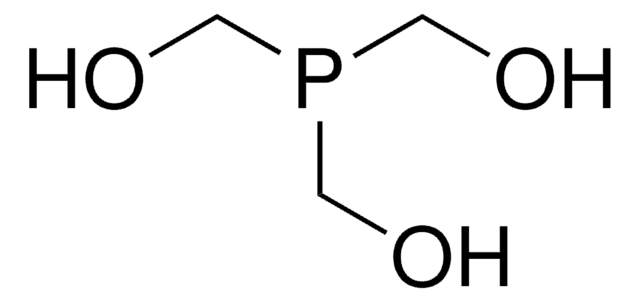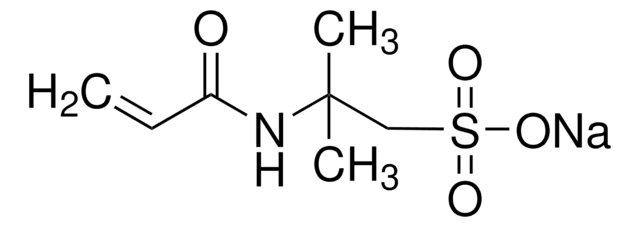For this compound, the Tetrakis(hydroxymethyl)phosphonium ion is the cation, and the chloride ion is the anion. Since the Tetrakis(hydroxymethyl)phosphonium ion is the more "interesting" part of this compound, one might see it referred to in the chemical literature as a cationic crosslinker or a cationic ligand.
404861
Tetrakis(hydroxymethyl)phosphonium chloride solution
80% in H2O
Synonym(s):
THPC solution
Select a Size
About This Item
Recommended Products
form
liquid
concentration
80% in H2O
refractive index
n20/D 1.512
density
1.341 g/mL at 25 °C
SMILES string
[Cl-].OC[P+](CO)(CO)CO
InChI
1S/C4H12O4P.ClH/c5-1-9(2-6,3-7)4-8;/h5-8H,1-4H2;1H/q+1;/p-1
InChI key
AKXUUJCMWZFYMV-UHFFFAOYSA-M
Looking for similar products? Visit Product Comparison Guide
Related Categories
Application
signalword
Danger
Hazard Classifications
Acute Tox. 3 Dermal - Acute Tox. 3 Oral - Aquatic Acute 1 - Aquatic Chronic 1 - Eye Dam. 1 - Met. Corr. 1 - Repr. 1B - Skin Corr. 1B - Skin Sens. 1
Storage Class
6.1A - Combustible acute toxic Cat. 1 and 2 / very toxic hazardous materials
wgk_germany
WGK 3
flash_point_f
Not applicable
flash_point_c
Not applicable
ppe
Eyeshields, Faceshields, Gloves, type ABEK (EN14387) respirator filter
Choose from one of the most recent versions:
Already Own This Product?
Find documentation for the products that you have recently purchased in the Document Library.
Customers Also Viewed
-
Is this chemical cationic or anionic? Thank you
1 answer-
Helpful?
-
Active Filters
Our team of scientists has experience in all areas of research including Life Science, Material Science, Chemical Synthesis, Chromatography, Analytical and many others.
Contact Technical Service
![Bis[tetrakis(hydroxymethyl)phosphonium] sulfate solution technical, 70-75% in H2O (T)](/deepweb/assets/sigmaaldrich/product/structures/236/818/d029a904-00ee-46ad-9fe2-2369f9894cc4/640/d029a904-00ee-46ad-9fe2-2369f9894cc4.png)


















